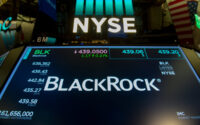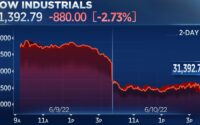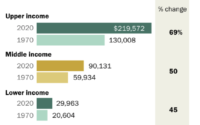JPMorgan’s Michele Sees 3% Across Yield Curve With Recession
(Bloomberg) — Wall Street veteran Bob Michele anticipates a flattening of the yield curve to 3% for securities maturing in two through 30 years, a forecast representing a victory over inflation and a loss for the US economy.
Most Read from Bloomberg
“The curve will flatten. I think 3% will be the opening gambit for that,” the chief investment officer for JPMorgan Investment Management Inc. told Bloomberg Television’s The Open on Wednesday. “I may be too high in terms of that prediction. I now worry we could be lower.”
If Michele is right then Treasury yields will drop dramatically this year, with the curve currently inverted at 3.98% in two years, 3.45% in 10 years and at about 3.70% for the 2053 maturity.
The Federal Reserve raised its benchmark overnight lending rate to 5% from zero since early 2022 to combat the fastest inflation in decades, a campaign Michele called “the most aggressive and pernicious pace of tightening by central banks in history. A rate shock is being delivered to the system in a big way.”
That rate-hike campaign will produce a moderate but “significant” recession starting at the end of the year, and the central bank will start to cut rates in September as data appearing before then will show the US is halfway into an economic contraction, Michele said. He predicts that inflation will be below 3% when the Fed begins reducing rates.
“Historically, from the last Fed rate hike to recession it’s averaged 13 months. We’re saying the last rate hike will be in May and by November, December, you’ll be in recession,” he said. “Midway to recession, the Fed starts cutting rates, that’s how we get to something like September.”
Meanwhile, the JPMorgan strategist still sees another rate hike at the Fed’s May policy meeting because while “inflation is rolling over in a massive way,” the Fed is focused on lagging indicators.
“The Fed is not done,” he said. “I think they will do one more,” adding “it’s entirely unnecessary.”
Earlier in the BTV interview, Michele noted that the shock from the pace of rate increases made US regional banks a “part of the problem.” Strains that took down Silicon Valley Bank and Signature Bank in March are currently plaguing First Republic Bank.
Regional banks are heavily dependent on the Federal Deposit Insurance Corporation and the Federal Home Loan Bank to get additional cash and the broader question is how will the banks operate without the federal assistance programs.
“It is somewhat naive to say this is just limited to First Republic,” Michele said.
Deposit outflows from the banks are mostly driven by consumers needing money to buy higher-priced goods during record-high inflation, and not just chasing higher returns.
“The deposit outflows just did not occur because they occurred, they occurred because businesses and households are burning cash in a big way, it is the higher price of everything and it is the higher cost to finance everything,” Michele said.
Most Read from Bloomberg Businessweek
©2023 Bloomberg L.P.
[ad_2]
Source link


